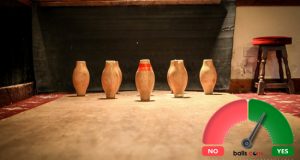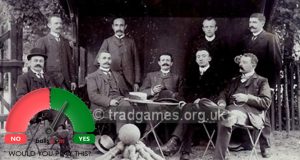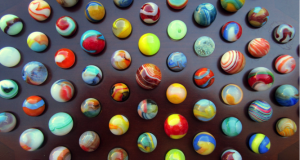Pétanque is a French form of boules where the goal is to throw hollow metal balls as close as possible to a small wooden ball while standing inside a starting circle with both feet on the ground. The game is normally played on hard dirt or gravel, but can also be played on grass, sand or other surfaces.
According to The International Rules of the Game of Petanque:
Article 2a — Characteristics of Approved Boules
Petanque is played with boules which are approved by the F.I.P.J.P. and which must conform to the following criteria:
1) They must be made of metal.
2) Their diameter must be between 7.05 cm (minimum) and 8 cm (maximum).
3) They must weigh between 650 grams (minimum) and 800 grams (maximum). The trademark of the manufacturer and the weight must be imprinted on the boules and must always be legible. In the case of competitions reserved exclusively for players 11 years old or younger, junior boules that weigh 600 grams and are 65 mm in diameter may be used provided that they are made by an approved manufacturer.
4) They must not filled with any foreign material (e.g. sand or mercury). They must not be tampered with in any way, nor altered or modified after manufacture by an F.I.P.J.P.–approved maker. It is particularly forbidden to re-temper boules in order to modify the hardness provided by the manufacturer. A player’s name or initials may be engraved on them after manufacture. Various logos and trademarks may be applied by the manufacturer.
References:
The International Rules of the Game of Petanque – http://www.usapetanque.org/2014rules.pdf
Photo – http://riversideboise.com/petanque-court
 Balls.com – Index of Balls used in Sporting Games and Events Sports balls specifications and rules. All levels of organized play.
Balls.com – Index of Balls used in Sporting Games and Events Sports balls specifications and rules. All levels of organized play.






